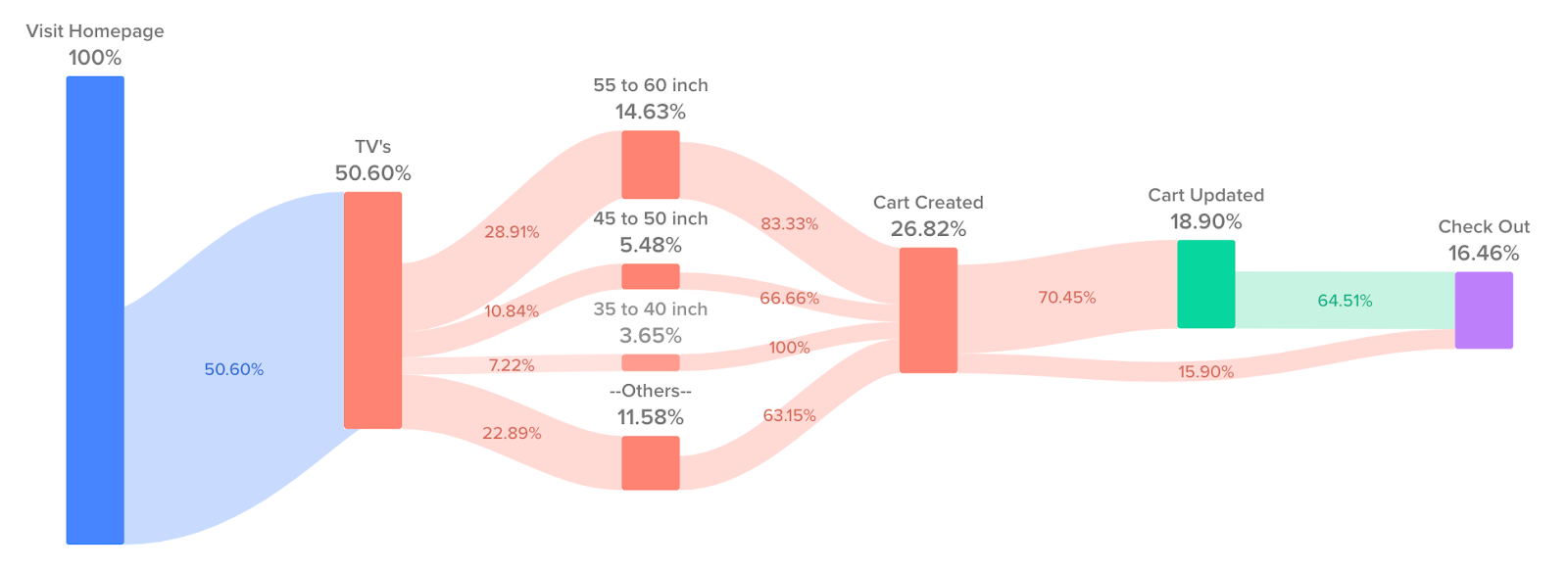
2020 saw nearly a decade’s worth of ecommerce growth in a single year—accounting for a 44% year-over-year jump from 2019.1 No doubt this incredible growth was fueled by the global pandemic that forced most countries inside for months on end. In fact, 150 million people shopped online for the first time during the 2020 pandemic lockdown.2
These statistics highlight both the incredible opportunities and challenges facing companies looking to grow their ecommerce businesses as millions of customers have changed their shopping habits out of necessity. By better understanding customer journeys, ecommerce companies can transform site visitors into customers who are open to sharing and promoting their experiences with others.
Mapping the Ecommerce Customer Journey
A customer journey is the online pathway people take from the moment they first become aware of an ecommerce company to the moment they receive the order. This journey may take minutes or months depending on the product or service.
Using website analytics and webpage feedback surveys, customer journeys can be mapped visually to identify obstacles as well as opportunities for enhancing the overall eCommerce experience in the online store and across all channels.
The below customer journey map for an online electronics retailer reveals the path site visitors take when searching for televisions. After viewing this customer journey map, the retailer would be wise to investigate why so many site visitors update their cart before checking out. Are they researching other televisions or products, having issues with the checkout process or is there another reason?

The Ecommerce Customer Journey on Mobile vs Desktop
It is important to note that a customer journey for a mobile site visitor is often far different from a desktop site visitor, so customer journey maps should be used to compare traffic and activities. For example, if a mobile checkout process involves three separate pages to complete (e.g., shipping address, payment information and a final confirmation), a customer journey mapping exercise might reveal that two-thirds of mobile site visitors drop off after the second page and do not complete the purchase.
Optimizing the Ecommerce Customer Journey
Slow web pages, poor navigation options and vague product pricing are some of the most obvious culprits for site visitor bounces and cart abandons, but by visually mapping different stages of the customer journey, companies can identify customer needs and proactively improve the experience for future customers.
Here are just a few ways understanding and optimizing the customer journey can help position an ecommerce business for growth:
- Data from the customer journey can help web developers and designers identify and prioritize functionality and usability enhancements across several parts of the ecommerce customer journey—decreasing the number of bounces and abandons
- Customer journey maps help marketing and sales teams align around customer perceptions by identifying how each group can anticipate customer needs
- A full customer journey map helps marketers and agencies identify what types of digital media will best attract customers and how to reconnect with site visitors that have abandoned cart in the past
As an ecommerce agency, Trone uses data to enhance web development, site performance and customer conversions for consumer and business-to-business stores. Contact us to discuss how we can elevate your ecommerce experience and create a customer journey map for your brand.
Research:
1Digital Commerce 360, US Ecommerce Grows 44.0% in 2020
2Shopify, Ecommerce Boom Fuels Record Online Competition
Image credit: Woopra

